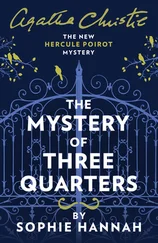Homo sapiens, or ‘Cromagnon man’, as this first representative of our species is known (so named after the Cro-Magnon – ‘Big Hole’ – rock shelter where his remains were first unearthed in 1868), was something else. His arrival in south-west France signalled a cultural explosion of technological innovation and artistic expression that has characterised the human race ever since. And he was the first, too, to leave behind an image of himself, so though thirty-five thousand years separate us, we can readily make his acquaintance. Fly, or catch the train, to Paris, and take the Metro westwards to the suburban station of St Germain-en-Laye. Emerging from the entrance, you cannot miss the impressive moated château of the Musée Nationale d’Antiquités, home to the largest of all archaeological collections. Few tourists make it this far out of the city, and you may be virtually alone as you stride past the first few display cabinets with their serried ranks of those familiar – if not exactly thrilling – stone implements. And then suddenly, without warning, your eyes are caught by the face of a teenage girl fashioned from the glistening ivory of a mammoth’s tusk, so small and delicate she could easily nestle in the palm of your hand ( see overleaf ). Her triangular-shaped face with its long, straight nose and deep-set eyes emerges from a slender, graceful neck framed by flowing locks of braided hair. She is the ‘Dame de Brassempouy’, the first human portrait, unearthed in 1895 by the French archaeologist Édouard Piette from amongst a pile of mammoth and rhinoceros bones that covered the floor of a cave a few kilometres outside the village of Brassempouy in southern France, after which she is named. Her air of youthful innocence is complemented by a second sculpted object in the same cabinet, of similar size and from the same site, that exemplifies that other timeless image of womanhood – the mature and childbearing. It may only be a broken fragment, but her prominent breasts and fleshy thighs are unmistakably those of a fertile woman.
This youthful teenager and this mature woman, the first images of modern humanity, are both visual and tactile, their polished surfaces testimony to the countless generations whose hands caressed that braided hair and felt those fleshy contours. They subvert the customary perception of man’s trajectory from a primitive past to a civilised present by compelling us to recognise how little has changed. The cultural history of our species may stretch back thirty-five thousand years, but from its earliest beginnings to the present day it is clearly ‘of a piece’.
And there is yet more to the Dame de Brassempouy than this invaluable perspective. Her immediate predecessors in Europe, the beetle-browed, thick-necked Neanderthals (so named after the Neander valley in Germany where their remains were first unearthed), were no more capable of creating so exquisite an object than were the very earliest humans who traversed the savannah plains of Africa several million years previously. Now, those Neanderthals had many virtues. They were tough and intelligent enough to survive for quarter of a million years in the hostile environments of the recurring Ice Ages that periodically swept across the continent, and they had a brain capacity slightly larger than our own. But they left not a single such image behind. The Dame de Brassempouy thus focuses our attention with exceptional clarity on that most important of questions: What happened in the transition to modern man? What is it that sets us apart, why should we be so different?
The Cromagnons’ arrival in south-western Europewas the culmination of an unexplained diaspora that 100,000 years earlier had impelled modern Homo sapiens to leave his African homeland and spread outwards to every corner of the earth. It was cold, of course, as throughout the tens of thousands of years of Cromagnon civilisation the ice cap several hundred miles to the north expanded and retreated. But they found shelter from the icy winds in the rocky south-facing valleys of the Dordogne and the Pyrenees. They had fire to warm themselves and animal furs for clothing, sewn together with the aid of ivory needles and held in place by exquisite ivory buttons. They lived in communities of several hundred spread out in separate dwelling places, and with a total population of probably little more than twenty thousand. They danced, as we know from the swinging breasts of an exquisite thirty-thousand-year-old statuette of a naked woman, and played music, fashioning drums from mammoth bones, clicking castanets from jawbones and flutes from the hollow bones of birds, which, with a whistle head attached, can be made to produce strong, clear notes. They wore jewellery and beads made from a few highly prized materials – certain types of seashells and animal teeth – which they traded over large distances. And they were great technical innovators. While their predecessors’ stone tools had scarcely changed in a million years, the Cromagnons prodigiously extended their sources of food supply by inventing both the spear-thrower and the harpoon. They invented oil lamps to illuminate the interiors of their caves, the drill that could put an ‘eye’ in a needle, and rope to bind their tents together.
And they had a passion for art. ‘We are justified in asserting they devoted themselves, intensely and continuously, to the creation of pictorial, graphic and sculptural works,’ writes the Italian art historian Paolo Graziosi. This is not the conventional version of primitive Stone Age art, where ‘stick’ men pursue their quarry with bows and spears, but is comparable to the art of the Italian Renaissance, with a naturalistic style that ‘sought to express reality in its deep unchanging essence’. Their powers of observation were so acute that ‘we know, for example, that the extinct rhinoceros of Ice Age Europe was adorned with a shaggy coat’, writes Ian Tattersall of the American Museum of Natural History, and that the extraordinary Megalocerus giganticus, a deer with vast antlers, had a darkly coloured hump behind its shoulders.
The Cromagnons’ artistic legacy takes two forms: ‘portable’ art, mostly sculptures and engravings on ivory and antler horn; and the distinctly ‘non-portable’ vast frescoes that covered the walls and ceilings of their cavernous cathedrals concealed in the depths of the mountainsides, in which they ‘mastered the problems of presenting three dimensions in two, and in giving a sensation of movement’.
And what movement! As archaeologist John Pfeiffer recalls on first glimpsing the ‘incomparable splendour’ of the painted caves at Lascaux in southern France:
It is pitch dark inside, and then the lights are turned on. Without prelude, before the eye has had a chance to look at any single feature, you see it whole, painted in red, black and yellow, a burst of animals, a procession dominated by huge creatures with horns. The animals form two lines converging from left and right, seeming to stream into a funnel mouth, towards and into a dark hole which marks the way into a deeper gallery.
It is not possible to convey the full range of the Cromagnons’ artistic virtuosity, so three striking examples must suffice. The first is the sculpted handle of a spear-thrower, fashioned from a reindeer’s antler, that shows a young ibex looking round at a large faecal stool emerging from its rectum, on which two birds are perched. The tautness of the animal’s neck muscles is beautifully conveyed in this humorous image, which must have been popular as several others, virtually identical, have since been discovered.
Next comes a fresco painting of a pride of lions from the Chauvet cave of the opening quotation to this chapter, whose ‘richly embellished chambers’ also feature mammoth, rhinoceros and an ‘exquisitely painted’ panel of horses’ heads. But these lions are the most impressive of all, showing how the Cromagnons had mastered the three-dimensional sense of perspective, with heavy paint-strokes beneath the neck adding depth to the image.
Читать дальше












